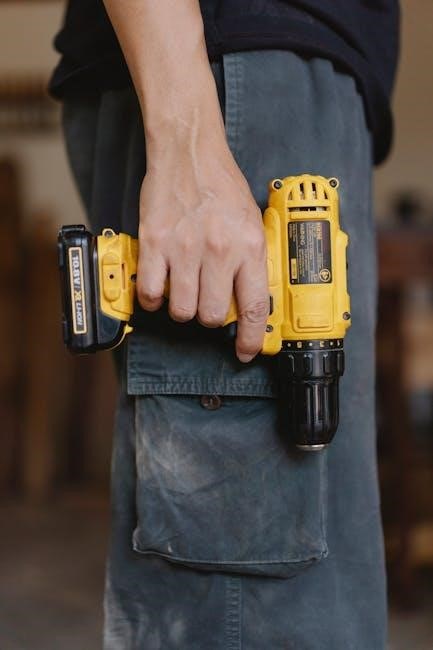Ansul Manual: A Comprehensive Guide
This comprehensive guide provides essential information about Ansul fire suppression systems. It covers various aspects, from understanding Ansul products to maintenance and troubleshooting. Accessing manuals, finding distributors, and ensuring system reliability are also key topics. This guide serves as a valuable resource.
Ansul fire suppression systems represent a global premium brand under Tyco Fire Protection Products. These systems are meticulously designed and manufactured adhering to strict standards. Rigorous testing is conducted by national and international independent laboratories, ensuring reliability and effectiveness. Ansul systems cater to special hazard fire protection needs across diverse industries.
The product line encompasses hand portable and wheeled fire extinguishers, large self-contained handline units, and pre-engineered systems for restaurants, vehicles, and industrial applications. Sophisticated detection and suppression systems are also part of Ansul’s offerings. Ansul R-102 systems, specifically designed for restaurant environments, are pre-engineered, wet chemical, cartridge-operated systems with fixed nozzle agent distribution networks, listed by Underwriters Laboratories, Inc. (UL/ULC).
These systems are engineered for rapid detection and combat of kitchen fires, protecting hoods, ducts, plenums, and filters associated with ventilating equipment. Regular maintenance by authorized distributors is crucial for optimal performance. Ansul’s commitment to innovation ensures that their fire suppression solutions meet specific customer needs while safeguarding lives, property, and businesses.
Understanding Ansul Products
Ansul offers a wide array of fire suppression solutions designed for various hazards and industries. Their product line includes hand portable and wheeled fire extinguishers suitable for initial fire response. Large, self-contained handline units provide extended firefighting capabilities. Pre-engineered systems, like the R-102 restaurant fire suppression system, offer specialized protection for specific environments.
The R-102 system utilizes wet chemical extinguishing agents, ideal for combating grease and oil fires common in commercial kitchens. Engineered fire detection and suppression systems provide sophisticated solutions for complex hazards. These systems often incorporate advanced sensors and control panels for automated fire detection and suppression activation. Ansul’s systems are designed and tested to meet stringent standards, ensuring reliability and effectiveness in critical situations.
Understanding the specific features and capabilities of each Ansul product is crucial for proper selection and implementation. Factors such as the type of hazard, size of the protected area, and required response time should be considered. Consulting with authorized Ansul distributors can help determine the most appropriate fire suppression solution for a given application.

Ansul R-102 Restaurant Fire Suppression System
The Ansul R-102 system is a pre-engineered fire suppression solution specifically designed for restaurant kitchens. It uses wet chemical agents to quickly extinguish grease and oil fires, protecting cooking equipment, hoods, and ductwork, as well as the filters.
R-102 System Overview and Operation
The Ansul R-102 Restaurant Fire Suppression System is an automatic, pre-engineered solution designed to protect commercial kitchen environments. It utilizes a wet chemical extinguishing agent, typically Ansulex, to rapidly suppress fires involving grease, oil, and other cooking materials. The system is cartridge-operated and regulated for consistent pressure during discharge.
Upon fire detection, either through fusible links that melt at a predetermined temperature or manual activation, the system discharges the extinguishing agent through strategically placed nozzles. These nozzles are designed to provide complete coverage of the protected area, including cooking surfaces, hoods, and ductwork.
The wet chemical agent creates a soapy layer that smothers the fire, prevents reignition, and cools the surrounding area. Simultaneously, the system typically shuts off gas or electrical power to the cooking appliances, further mitigating the risk of fire spread. The R-102 system is designed for easy cleanup and minimal downtime following a fire event.
Regular maintenance and inspections are crucial for ensuring the system’s proper operation. Only authorized Ansul distributors should perform maintenance and recharge services.
Key Components of the R-102 System
The Ansul R-102 Restaurant Fire Suppression System comprises several crucial components working in concert to ensure effective fire protection. These components include the agent storage tank, which houses the Ansulex wet chemical extinguishing agent, and the releasing unit, responsible for discharging the agent upon activation. Nozzles are strategically positioned to distribute the agent effectively over cooking surfaces and exhaust systems.
Fusible links, designed to melt at specific temperatures, serve as heat detectors, triggering the system automatically. A regulated actuator assembly controls the release of the extinguishing agent, ensuring consistent pressure and flow. The system also features a manual pull station, allowing for immediate manual activation in case of a fire.
Additionally, gas valves or electrical shut-off switches are integrated to automatically cut off the fuel supply to cooking appliances, preventing further fire escalation. Piping and fittings connect all components, ensuring a secure and reliable pathway for the extinguishing agent. Finally, a control panel monitors the system’s status and provides visual and audible alerts.
These components, working together, provide comprehensive fire suppression for commercial kitchens.
Installation Guidelines for R-102 Systems
Proper installation of the Ansul R-102 system is crucial for ensuring its effectiveness in suppressing kitchen fires. Begin by consulting the detailed installation manual provided by Ansul, ensuring adherence to all specifications and local codes. The system designer must be consulted whenever changes are planned for the system or area of protection.
Carefully position nozzles to provide complete coverage of all protected cooking surfaces and exhaust areas, following the manufacturer’s guidelines for spacing and orientation. Securely mount the agent storage tank and releasing unit in an accessible location, away from potential hazards. Install fusible links in strategic locations to ensure rapid fire detection, and properly connect all piping and fittings, ensuring a leak-proof seal.
Integrate the system with gas valves or electrical shut-off switches to automatically cut off the fuel supply to appliances upon activation. Connect the manual pull station in an easily accessible location for manual system activation. Thoroughly test the system after installation to verify proper operation and agent discharge. Only authorized Ansul distributors should perform system maintenance.
Document the installation with detailed diagrams and records, noting the location of all components. Proper installation is paramount for optimal fire protection.

Maintenance and Service of Ansul Systems
Regular maintenance is crucial for Ansul systems’ reliability. Semi-annual examinations ensure proper function. Troubleshooting addresses common issues, and authorized distributors provide expert service. Consistent maintenance guarantees optimal fire protection and system longevity, minimizing potential risks.
Importance of Regular Maintenance
Regular maintenance of Ansul fire suppression systems is paramount to ensuring their reliability and effectiveness in critical situations. These systems are meticulously engineered to meet stringent standards, and consistent upkeep guarantees optimal performance when needed most. Neglecting maintenance can lead to system failures, compromising safety and potentially causing significant damage.
Scheduled inspections and servicing by authorized Ansul distributors are vital for identifying and addressing potential issues before they escalate. These professionals possess the expertise to assess system components, detect wear and tear, and perform necessary repairs or replacements. Moreover, regular maintenance ensures compliance with safety regulations and insurance requirements.
Properly maintained Ansul systems offer peace of mind, knowing that your fire protection measures are in optimal condition. This proactive approach minimizes the risk of system malfunctions during emergencies, safeguarding lives, property, and business continuity. Investing in regular maintenance is a cost-effective way to protect your assets and maintain a safe environment.
Furthermore, consistent maintenance extends the lifespan of your Ansul system, maximizing its return on investment. By adhering to recommended maintenance schedules and utilizing authorized service providers, you can ensure that your system remains in peak operating condition for years to come.
Semi-Annual Maintenance Examination Procedures
Semi-annual maintenance examinations are crucial for maintaining the integrity and functionality of Ansul fire suppression systems. These procedures involve a comprehensive inspection of all system components to ensure they are in proper working order. Qualified technicians should conduct these examinations, following the guidelines outlined in the Ansul manual.
The examination begins with a visual inspection of the agent storage tank, checking for any signs of damage, corrosion, or leaks. The pressure gauge is verified to be within the specified operating range. Next, the technician inspects the distribution nozzles, ensuring they are free from obstructions and properly aligned. Fusible links are examined for integrity and replaced if necessary.
The manual pull station is tested to confirm proper activation of the system. The regulated release assembly is inspected for smooth operation and proper pressure regulation. All piping and fittings are checked for leaks or damage. If applicable, electrical components are tested for functionality and proper wiring.
A detailed report is generated, documenting the findings of the examination and any corrective actions taken. Any identified deficiencies are promptly addressed to ensure the system’s readiness. These semi-annual examinations, performed meticulously, guarantee the continued effectiveness of the Ansul fire suppression system.
Troubleshooting Common Issues
Ansul fire suppression systems are engineered for reliability, but occasional issues may arise. Troubleshooting these common problems efficiently is essential to maintaining system readiness. One frequent issue is low pressure in the agent storage tank, potentially caused by leaks or a faulty regulator. Check for leaks in the tank, piping, and fittings, and verify the regulator’s functionality.
Another common problem is obstructed discharge nozzles, preventing proper agent distribution. Inspect the nozzles for grease, debris, or corrosion, and clean or replace them as needed. Fusible links may fail prematurely due to environmental factors or improper installation. Regularly inspect and replace fusible links per the manufacturer’s recommendations.
System activation failures can occur due to a malfunctioning manual pull station or a faulty regulated release assembly. Test the manual pull station to ensure proper activation, and inspect the release assembly for damage or corrosion. Electrical issues, such as wiring problems or faulty sensors, can also cause system malfunctions. Verify wiring connections and test electrical components for proper operation.
If issues persist, consult the Ansul manual and contact a qualified technician for assistance. Proper troubleshooting and timely repairs will ensure the continued effectiveness of the fire suppression system.

Resources and Support
Access comprehensive Ansul manuals and documentation for detailed product information. Locate authorized Ansul distributors for expert assistance, parts, and system maintenance. Reliable resources and support ensure optimal performance and safety of your fire suppression systems, safeguarding your assets and personnel.
Accessing Ansul Manuals and Documentation
Gaining access to the correct Ansul manuals and documentation is crucial for the proper operation, maintenance, and troubleshooting of your fire suppression systems. These resources provide detailed information about system components, installation procedures, and safety guidelines. Several avenues exist for obtaining these essential documents.
Firstly, the official Ansul website serves as a central repository for manuals, data sheets, and technical bulletins. Navigate to the “Resources” or “Support” section to search for documents specific to your Ansul system model. Ensure you have the correct model number for accurate results.
Secondly, authorized Ansul distributors are valuable sources for obtaining manuals. These distributors possess in-depth knowledge of Ansul products and can provide the correct documentation for your specific needs. They can also offer guidance on system operation and maintenance procedures.
Thirdly, consider contacting Ansul directly through their customer service channels. Their technical support team can assist in locating the required manuals and provide expert assistance with any questions you may have regarding your fire suppression system. Remember to have your system details ready when contacting them.
Finding Authorized Ansul Distributors
Locating authorized Ansul distributors is essential for purchasing genuine parts, obtaining expert service, and ensuring the proper maintenance of your fire suppression systems. These distributors are trained and certified by Ansul to provide knowledgeable support and reliable products. Several methods can assist you in finding a reputable distributor in your area.

Firstly, utilize the “Find a Distributor” tool on the official Ansul website. This tool allows you to search for distributors based on your location, providing contact information and service capabilities. This is often the quickest and most accurate way to identify authorized partners.
Secondly, contact Ansul directly through their customer service channels. They can provide a list of authorized distributors in your region and verify their credentials. This ensures you are working with a legitimate and certified provider.
Thirdly, consider reaching out to industry associations or fire protection organizations. These groups often maintain directories of reputable fire suppression system providers, including authorized Ansul distributors. This can be a valuable resource for finding experienced and qualified professionals.
